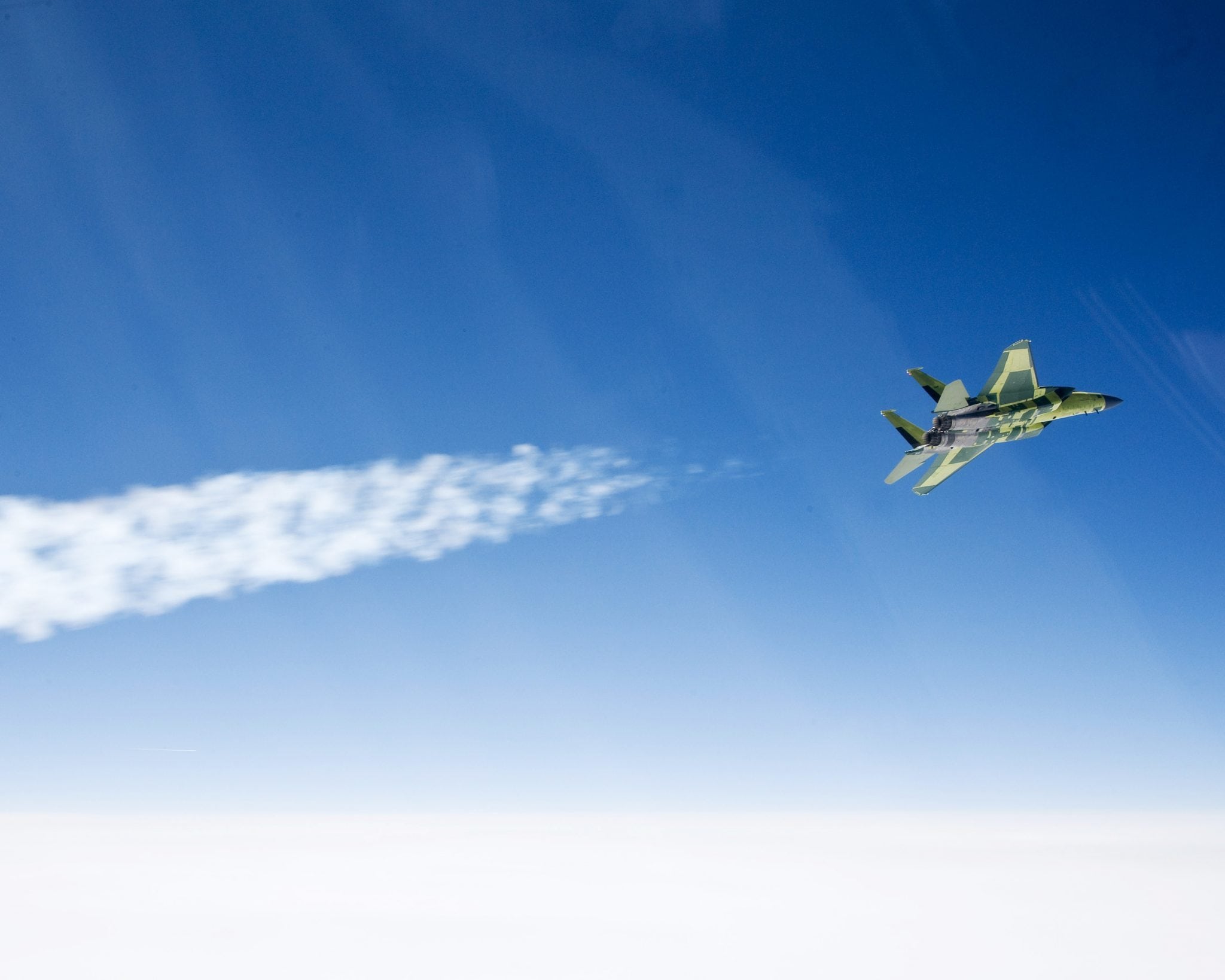 |
| The Boeing F-15K, launch aircraft for the BMATS capability. Photo: Boeing |
[Avionics Today 09-25-2014] Boeing recently unveiled a new Multi-platform Avionics Test System (BMATS), which enables customers to repair and confirm the operational status of complex electronics for a wide range of Boeing and non-Boeing weapons systems alike. This is unlike previous systems that have been designed to support a single platform, due mostly to budgetary restraints.
“Historically, the sustainment program work scope and budget has compartmented the support equipment solutions. Traditionally, that scope has been limited to a single platform. Whether it be, in the case of Boeing, the F-15, F/A-18, AV-8 or T-45 platforms specifically, that’s the constraint on what we provide to the customers,” said Chris Clendenin, director of Boeing’s support equipment systems and services. “Even if we were able to support other platforms beyond the subject of the contract, we wouldn’t be authorized to include that capability because more than likely it would drive cost, schedule or risk.”
BMATS expands that narrow, single-platform scope, however, and is equipped with commercial technology that satisfy a diverse set of requirements from all branches of the military, resulting in a common test platform that Boeing believes will be much more time and cost effective than the multiple specialized solutions that are offered now.
Clendenin notes that the platform also works to reduce turnaround time on spares and repairs by providing local capability and skipping the sometimes long and arduous export process that arises from having to ship parts all the way back to Boeing facilities in the United States.
“What we’re trying to do is reduce the turnaround time related to repairs by having local capability,” Clendenin said. “Having local programs allow the process to get away from exports and reduce the spares pool. This can result in something like a 15-to-30-day turnaround rate as opposed to the 200-day turnaround rate we sometimes see now.”
The program has been in development for two years and will first be delivered to a Maintenance Repair Overhaul (MRO) facility in Yeongcheon, Korea, which serves as an electronics support center for for F-15K fighter jets. This launch customer isn’t a mistake, with growing demand in the Asia-Pacific region, and with Boeing projecting the need for 440,000 new pilots and maintenance techs by the year 2020, the system is looking to mitigate rising supply chain costs.
“South Korea was chosen because the region was not already covered by an existing Boeing repair capability,” Clendenin said. “What makes BMATS different, why we’re able to go beyond the normal work scope that we would normally go to within a customer contract, is that Boeing funded the development of the BMATS because they intentionally were providing a repair capability to the South Korean peninsula that will reduce the cost of repairs and the related logistics costs of the supply chain by having a local repair capability in the South Korean peninsula specifically related to the F-15Ks that Boeing has delivered to the Republic of Korea air force.”
Outside of the F-15K, the F/A-18, AV-8, T-45, B-1 and B-2 Bomber platforms have heavily influenced the design of BMATS. This is to mean that for other Boeing and non-Boeing avionics platforms alike, the hardware and software in the system have been designed to accommodate a replacement or an augmentation of the current suite of instrumentation in order to support alternate requirements for platforms that have not yet been tested. And with the Boeing Avionics Maintenance, Repair and Overhaul (BAMRO) facility in the South Korean peninsula at the Daegu Air Force Base set to take delivery of the first system early next year, Boeing is well on its way to testing the system for platforms outside of the F-15K.
“We’re already collaborating with two other programs within Boeing: The Airborne Early Warning and Control platform (AEW&C) and the Apache AH-64 program to utilize the BAMRO capability in the form of the BMATS for the avionics repair on those two platforms,” Clendenin said.
The hope is that this capability will expand to other regions where it might prove cost effective.
“At the end of the day everything we’ve done is motivated by the pursuit of affordability,” said Clendenin. “If we can reduce the life cycle costs, the total ownership costs, the operations and support costs to Boeing platforms, then we’ve succeeded. That’s our mission.”